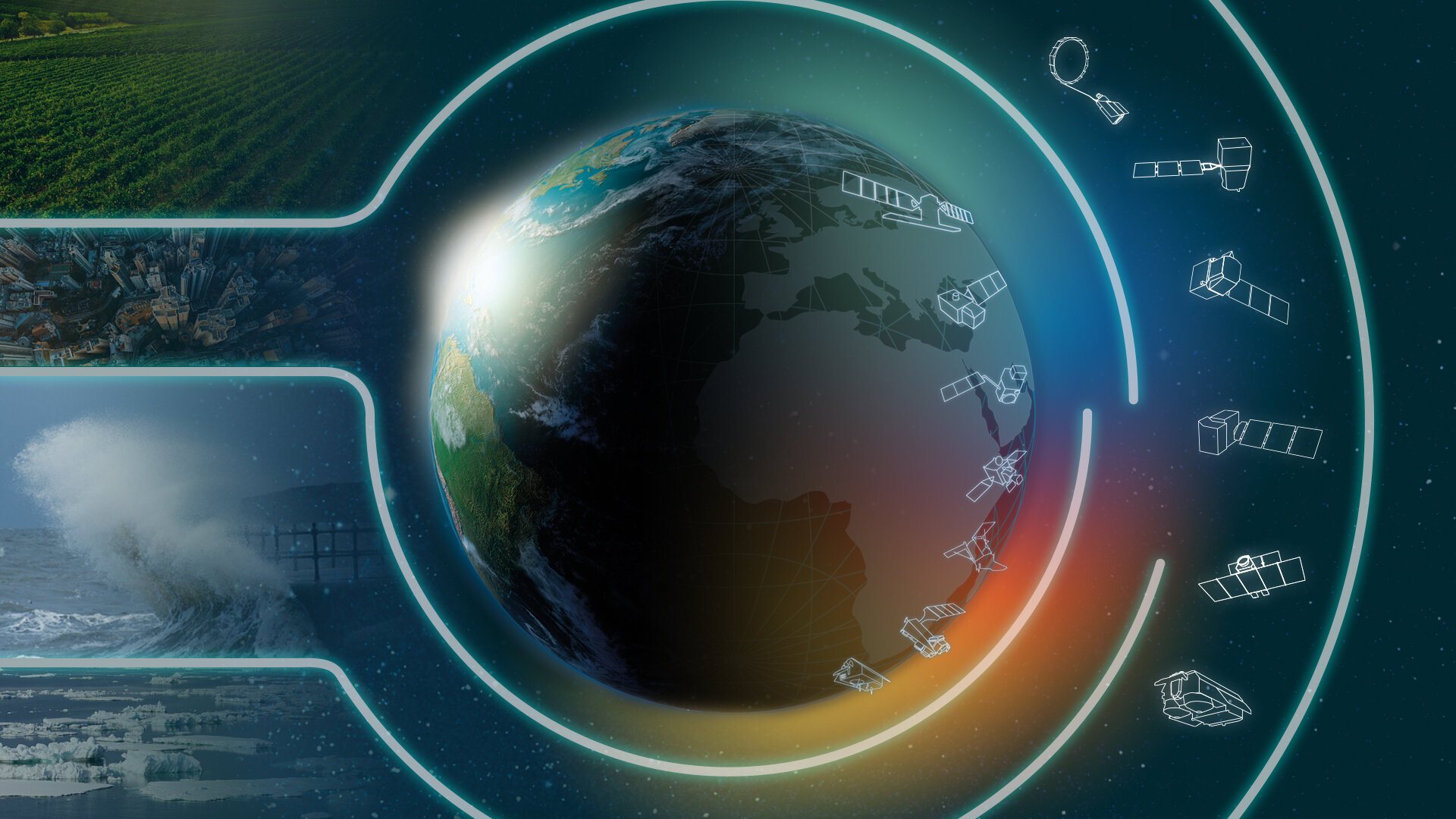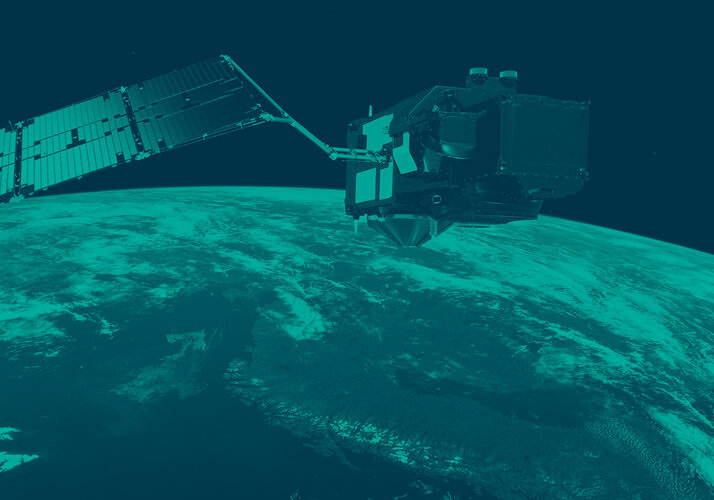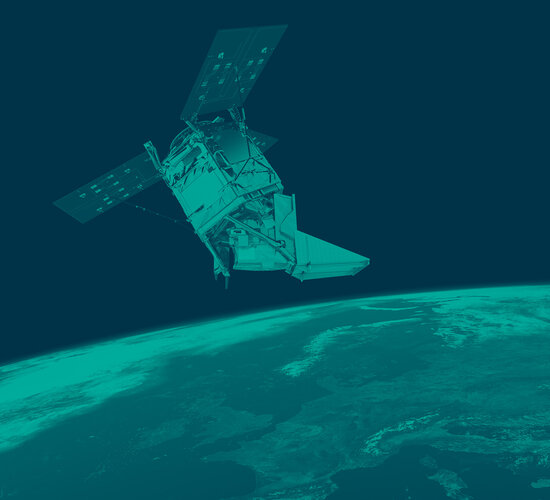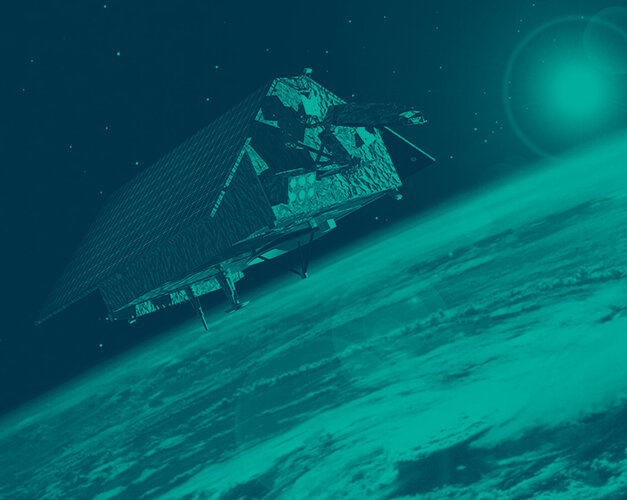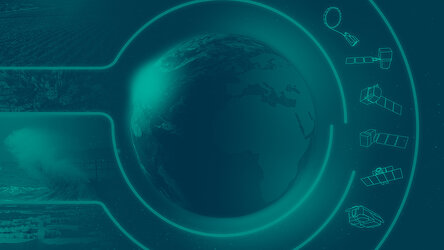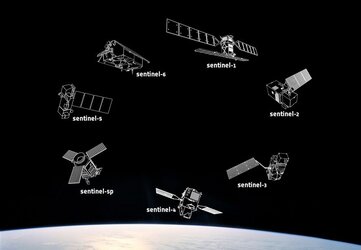The Sentinel missions
The Sentinel missions are developed specifically for the operational needs of the Copernicus programme. Each Sentinel mission is based on a constellation of satellites to fulfil revisit and coverage requirements, providing robust datasets for Copernicus services.
The current suite of missions carry a range of technologies, such as radar and multi-spectral imaging instruments for land, ocean and atmospheric monitoring:
- Sentinel-1 is a polar-orbiting, all-weather, day-and-night radar imaging mission for land, ocean and emergency services. Sentinel-1A was launched on 3 April 2014 and Sentinel-1B on 25 April 2016. Both were taken into orbit on a Soyuz rocket from Europe's Spaceport in French Guiana. The mission ended unexpectedly for Sentinel-1B in 2022, but the launch of Sentinel-1C on 5 December 2024 returned the mission to its full potential as a two-satellite constellation. Additionally, Sentinel-1C brings new capabilities to the mission for detecting and monitoring maritime traffic.
- Sentinel-2 is a polar-orbiting, multispectral high-resolution imaging mission for land monitoring to provide, for example, imagery of vegetation, soil and water cover, inland waterways and coastal areas. Sentinel-2 can also deliver information for emergency services. Sentinel-2A was launched on 23 June 2015 and Sentinel-2B followed on 7 March 2017. On 5 September 2024, Sentinel-2C was launched into orbit to join its siblings and ensure the continuous provision of high-resolution data from the mission.

- Sentinel-3 is a multi-instrument mission to measure sea-surface topography, sea- and land-surface temperature, ocean colour and land colour with high-end accuracy and reliability. The mission supports ocean forecasting systems, as well as environmental and climate monitoring. Sentinel-3A was launched on 16 February 2016 and Sentinel-3B joined its twin in orbit on 25 April 2018.
- Sentinel-5 Precursor – also known as Sentinel-5P – is the forerunner of Sentinel-5 to provide timely data on a multitude of trace gases and aerosols affecting air quality and climate. It has been developed to reduce data gaps between the Envisat satellite – in particular the Sciamachy instrument – and the launch of Sentinel-5. Sentinel-5P was taken into orbit on 13 October 2017 on a Rockot launcher from the Plesetsk Cosmodrome in northern Russia.
- Sentinel-4 is an ultraviolet, visible and near-infrared spectrometer carried on the Meteosat Third Generation Sounder (MTG-S) satellites. From geostationary orbit, Sentinel-4 delivers data every hour, providing information on a wide range of trace gases and pollutants to forecast and monitor air quality over Europe. Sentinel-4 was launched on 1 July 2025 on board the first MTG-S satellite.
- Sentinel-5 is an advanced imaging spectrometer that will monitor the atmosphere from polar orbit hosted on a MetOp Second Generation (MetOp-SG) weather satellite. The mission provides daily, global coverage to support science, forecasts and public health alerts for air pollution, UV radiation, greenhouse gases and climate. Sentinel-5 was launched on 13 August 2025 aboard the first MetOp-SG satellite.
- Sentinel-6 carries a radar altimeter to measure global sea-surface height, primarily for operational oceanography and for climate studies. The first satellite was launched into orbit on 21 November 2020.
Looking to the future, six Sentinel Expansion missions are being developed to address EU policy and gaps in Copernicus user needs, and to expand the current capabilities of the Copernicus Space Component.
Back to Copernicus homepage |


